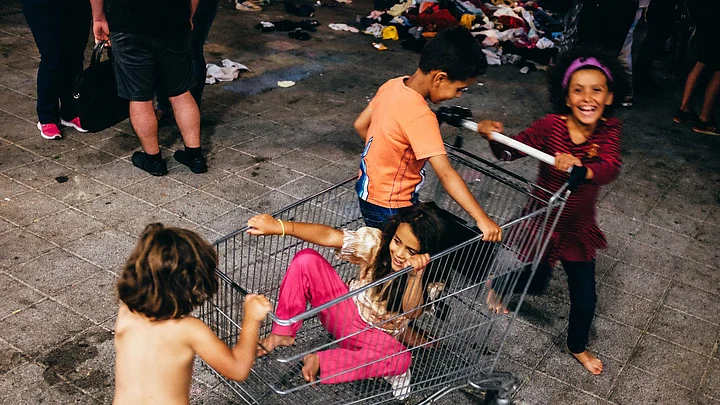On World Refugee Day, this is from The Quint’s archives.
On my way back from work, on what seems like any other quiet Thursday evening, I’m checking the news on my phone to catch up on the refugee crisis and I start walking towards Keleti, where I’m meeting some friends.
As I come up from behind the railway station, I’m not sure what to expect. I can hear voices: The Hungarian police asking the refugees to settle down interspersed with shouting in Arabic. I understand neither but as I approach, the chaos becomes clearer.
I pass families camped out on the pavement, women breastfeeding their newborn children, men running around trying to get information from the authorities, helpless children looking at each other unable to grasp what has come to be. I see waves of people – hundreds of them. Some have been here for days, others just got off the last train in from the border.
What was once the busiest railway station in Budapest, now looks like a war zone.
My friends have set up a corner for the children, engaging them in crafts and games. When I get there, I’m greeted by smiling children who are jumping about and playing games from their parts of the world, while others stay busy creating artistic masterpieces. They’re excited to see a new face, and I spend the rest of the evening making cut-outs for them to fill with color.
They use my face as a canvas: I become a cat.
The next day I see them on TV – most of them have been allowed into Austria.
A few days later, we head to Roszke, a camp at the Hungarian border. Refugees crossing over from Serbia are rounded up and taken in for registration. We’re carrying supplies that we pass around to the people in transit. They’re exhausted, scared and understandably tense.
But the children remind us of Keleti all over again.
My friend cuts out a crown for a young girl sitting next to us. Before we know it, we’re surrounded by 20 children. They want crowns. They want their faces painted. They want balloons.
Word spreads and the numbers grow. The tension eases and people relax as they queue up for their buses that will send them onward, hopefully to a better life.
(Siddharth Pandit lives in Budapest with corporate shores to his left and the seas of photography to his right. Always on the move, you can track him down @thesidp on Instagram and Twitter.)
(At The Quint, we question everything. Play an active role in shaping our journalism by becoming a member today.)
